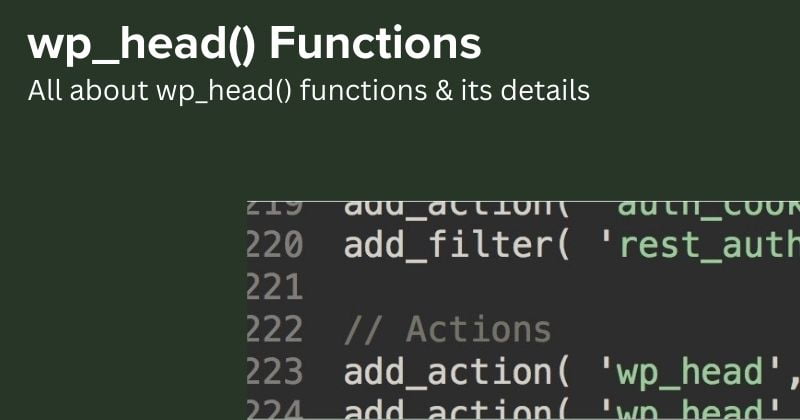wp_head() is a function used in WordPress themes to output the head section of a web page. This section includes things like the document type, meta tags, links to CSS stylesheets and JavaScript files, and other elements that go in the <head> section of an HTML document.
wp_head() is typically called in the header.php file of a WordPress theme, between the <head> and </head> tags. Here is an example of how you might use the wp_head() function in your theme:
wp_head() is a function used in WordPress themes to output the head section of a web page. This section includes things like the document type, meta tags, links to CSS stylesheets and JavaScript files, and other elements that go in the <head> section of an HTML document.
wp_head() is typically called in the header.php file of a WordPress theme, between the <head> and </head> tags. Here is an example of how you might use the wp_head() function in your theme:
<!DOCTYPE html>
<html <?php language_attributes(); ?>>
<head>
<meta charset="<?php bloginfo('charset'); ?>">
<meta name="viewport" content="width=device-width, initial-scale=1.0">
<title><?php wp_title('|', true, 'right'); ?></title>
<?php wp_head(); ?>
</head>
<body>
...
In this example, the wp_head() a function is called after the <title> tag and before the closing </head> tag. This will output any necessary elements that should be included in the head section of the page, such as CSS and JavaScript files.
wp_head() is an important function that is used by many plugins and themes to add their own custom styles and scripts to the head section of a page. It should always be included in the header.php file of your theme if you want to ensure the proper functionality of your WordPress site.
I hope this helps! Let me know if you have any further questions.

Hi, this is a comment.
To get started with moderating, editing, and deleting comments, please visit the Comments screen in the dashboard.
Commenter avatars come from Gravatar.
yesd
tetee